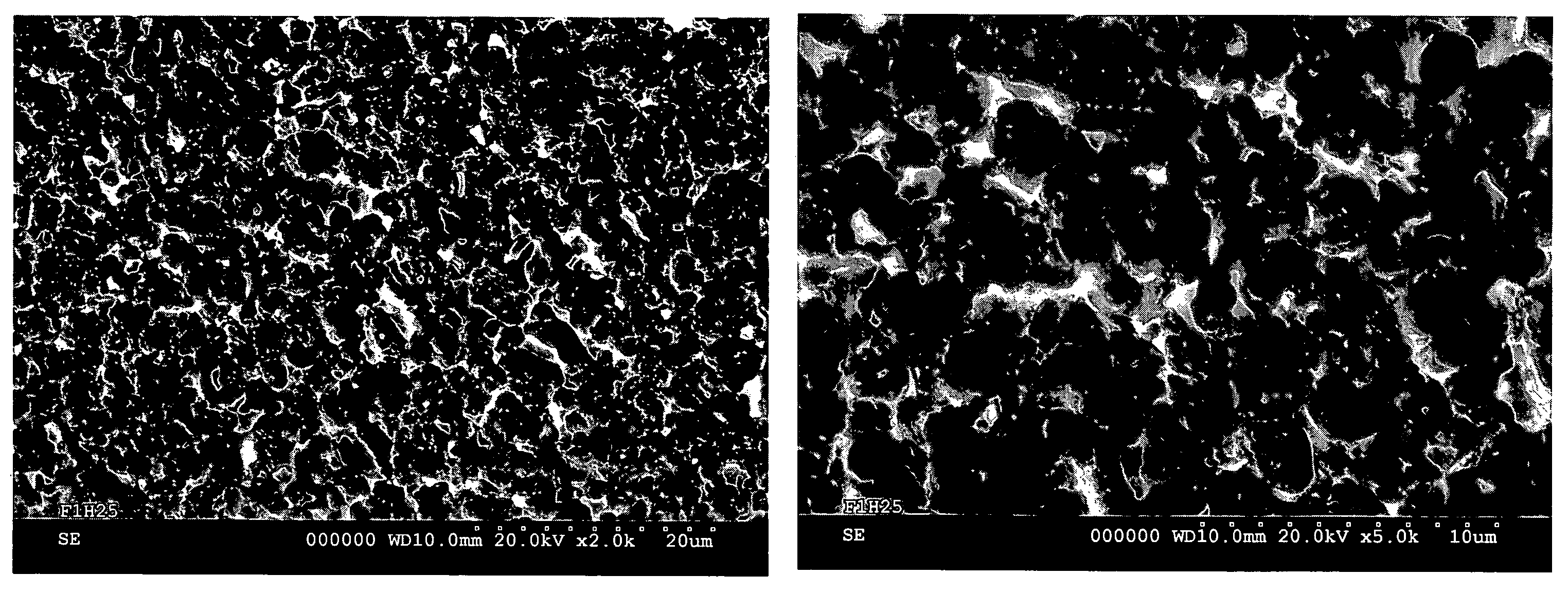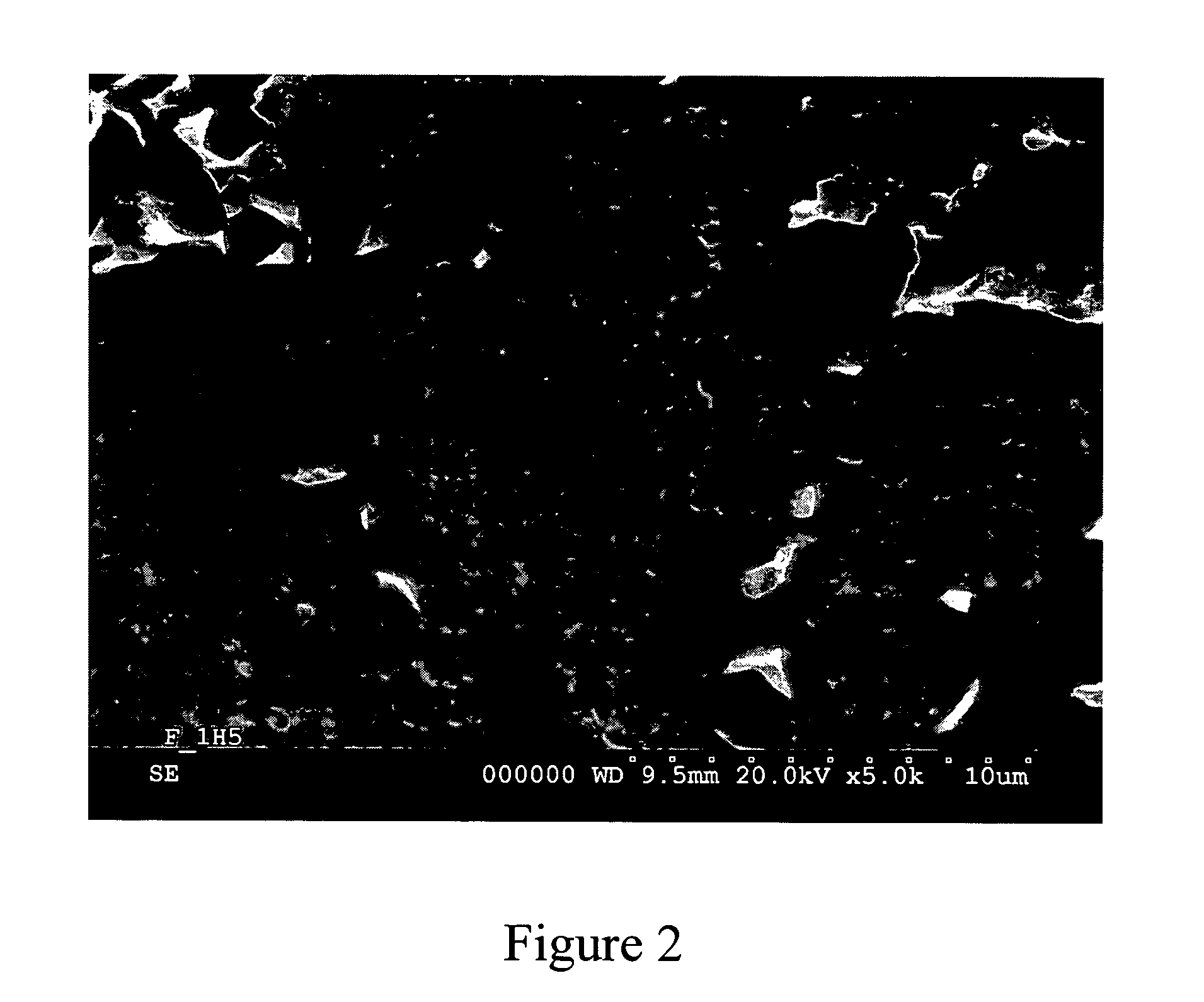Methods for producing metallic implants having roughened surfaces
a technology surface, which is applied in the field of metal orthopaedic implants, can solve the problems of removing a relatively large amount of metal from the surface, adversely affecting the osseointegration of the orthopaedic implant, and preparing the implant surface subject to considerable disagreement, so as to facilitate tissue and bone growth, and maintain structural integrity
- Summary
- Abstract
- Description
- Claims
- Application Information
AI Technical Summary
Benefits of technology
Problems solved by technology
Method used
Image
Examples
example 1
[0067]This example demonstrates the chemical etching process of the invention. A polished Ti6A14V coupon was exposed to an etching solution containing 1 wt. % NaF and 0.25 N HCl for approximately five minutes at 25° C. After etching, the coupon was removed from the etching solution, thoroughly rinsed with water, and dried. The resulting coupon had a micron-scale surface roughness having a surface roughness value (Ra) of approximately 180 nm. SEM micrographs of the surface of the chemically etched coupon are provided in FIGS. 1A (2000× magnification) and 1B (5000× magnification).
example 2
[0068]This example demonstrates the chemical-etching process of the invention. A polished Ti6A14V coupon was exposed to an etching solution containing 0.1 wt. % NaF and 0.25 N HCl for approximately five minutes at 25° C. After etching, the coupon was removed from the etching solution, thoroughly rinsed with water, and dried. The resulting coupon had a nanometer-scale surface roughness having a surface roughness value (Ra) of approximately 60 nm. An SEM micrograph of the surface of the chemically etched coupon is provided in FIG. 2.
example 3
[0069]This example demonstrates the improved adhesion exhibited by bioactive coatings applied to the orthopaedic implant of the invention. An approximately 8 μm thick biomimetic apatite coating was applied to a polished Ti6A14V coupon and the chemically etched coupon of Example 1 using a solution that mimics the conditions in the human body. The surfaces of the coupons were then analyzed using scanning electron micrography (SEM) and Energy Dispersive Spectroscopy (EDS) to determine the presence of the elements comprising an apatite coating. The SEM micrographs and EDS spectrum for the polished coupon are provided in FIGS. 3A and 3B, respectively, and the SEM micrographs and EDS spectrum for the chemically etched coupon are provided in FIGS. 4A and 4B, respectively. As can be seen from FIGS. 3B and 4B, each of the coated coupons exhibited strong peaks corresponding to calcium and phosphorous, which indicated the presence of a significant apatite coating on the surface of each coupon....
PUM
| Property | Measurement | Unit |
|---|---|---|
| diameter | aaaaa | aaaaa |
| size | aaaaa | aaaaa |
| size | aaaaa | aaaaa |
Abstract
Description
Claims
Application Information
 Login to View More
Login to View More - R&D
- Intellectual Property
- Life Sciences
- Materials
- Tech Scout
- Unparalleled Data Quality
- Higher Quality Content
- 60% Fewer Hallucinations
Browse by: Latest US Patents, China's latest patents, Technical Efficacy Thesaurus, Application Domain, Technology Topic, Popular Technical Reports.
© 2025 PatSnap. All rights reserved.Legal|Privacy policy|Modern Slavery Act Transparency Statement|Sitemap|About US| Contact US: help@patsnap.com



